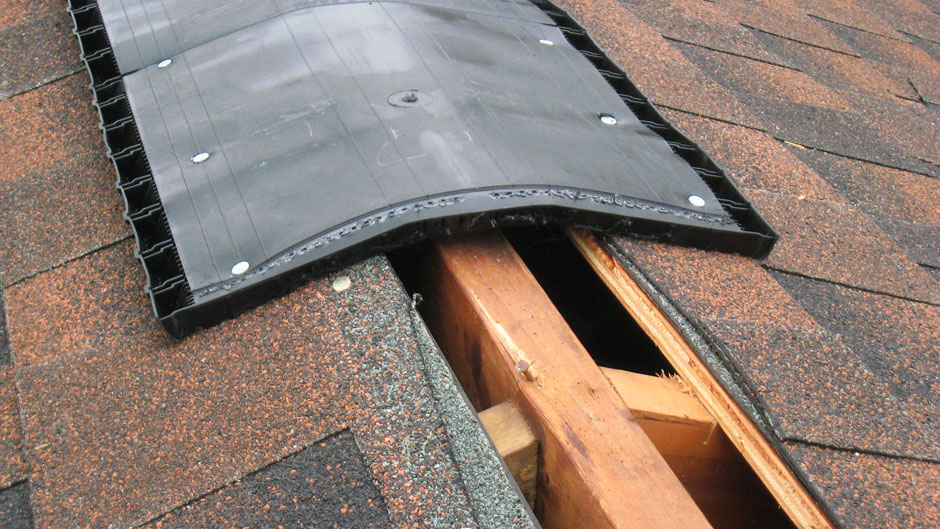Aim to have a 50 50 balance between intake vents and exhaust vents.
How far below peak to install a roof vent.
Vents evenly spaced underneath the roof provide intake.
Repeat the process for each vent you want to install.
Proper installation number and location of roof ventilation is needed to maximize the performance of a roof.
Of airspace between the top of the insulation and the back of the roof sheathing.
In order to facilitate this exchange of warm and cool air the general rule of thumb suggests installing at least 1 sq.
Building code specifies 1 square foot of venting for every 150 square feet of attic floor space with the venting distributed equally between soffit vents and roof or gable vents.
The 14 inch diameter unit could provide a complete air change in the attic every 14 minutes at 15 mph.
The code calls for a minimum of 1 in.
Nrca and everybody needs a roof how to install roof vents.
Of vent for every 300 sq.
To take full advantage of this effect a roofer will generally install intake roof vents for houses lower on the roof closer to the eaves while placing exhaust vents higher near the peak to let the cold air push the hot air out more easily.
How to install a roof vent roof vents can help exhaust moisture from inside your home due to a kitchen bathroom laundry room and more.
The roofer your builder hires can install a turbine vent in less than 15 minutes.
Measure out the distance between from the soffit vent you just installed to add more.
Vents should be installed 24 inches below the peak.
To calculate an example of exhaust and intake use 25 feet of roof ridge vent.
Hip roofs are best ventilated with powered vents solar vents or turbines.
Multiply it by 18 square inches the net free air per foot of ridge.
Static ventilation will not provide enough air movement for hip roofs that have larger attic spaces typically.
Luckily these vents are easy to find at your local home improvement store and easy to install using just a few tools.
Imagine what happens if you install two or three of these simplistic turbine vents on the back side of your roof out of view.
This video has examples of both static and ridg.
You should have 1 square foot 0 093 m 2 of ventilation for every 300 square feet 28 m 2 in your home.
How to ventilate a hip roof.

